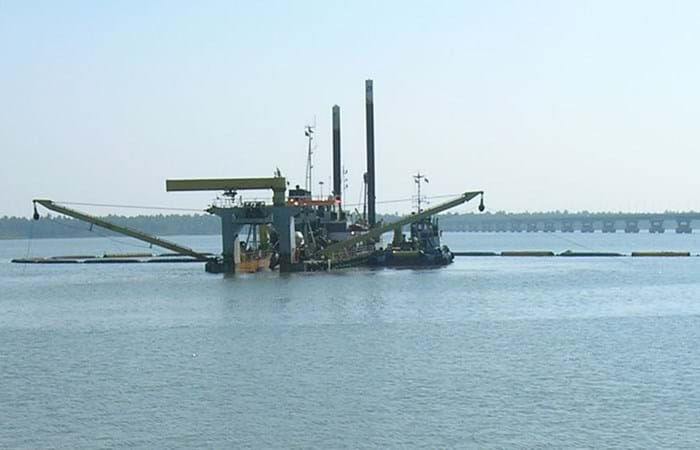A large-scale dredging, trenching, pipe pulling and backfilling project. Reliance Industries develops the offshore gas field known as Block KGDWN-98/3 in the Krishna Godavari Basin, Bay of Bengal off the East Coast of India. The gas field will be linked to onshore customers and covers an area of approximately 7,500 km<sup>2</sup>. The field stretches an area 40 to 60 kilometers southeast of Kakinada. The scope of works comprised the dredging of a 21 kilometers long and 18 meters wide trench for three 24" gas pipelines, each with a 6" piggyback pipeline, one 12" effluent pipeline and two umbilical cables in water depths ranging from 0 to 50 meters. After pipe laying by the main contractor the pipeline trench was backfilled with partly rock and sand.
Two Boskalis cutter suction dredgers (CSD’s) were deployed in August 2007. The self-propelled sea-going CSD Cyrus II was utilized to dredge a work channel from the river mouth to offshore to enable access for the trailing suction hopper dredgers (TSHD’s). The channel dredging work included dredging of a trench. The medium size CSD Orion was deployed to remove shoals in the river to allow TSHD’s to enter the river and dredge the trench. Furthermore the 'Orion' dredged the shore approach and an access channel of 1,250 meters plus turning basin for rock loading operations. The dredged spoil from the cutter dredgers was deposited by means of a spreader pontoon or via a shore connection. The remainder of the trench was dredged with among others the Boskalis TSHD Cornelis Zanen. The total dredged quantity was approximately 8.5 million m3. The dredged material was temporarily stored in predetermined underwater storage areas close to the dredge areas for later reuse as backfill material.
